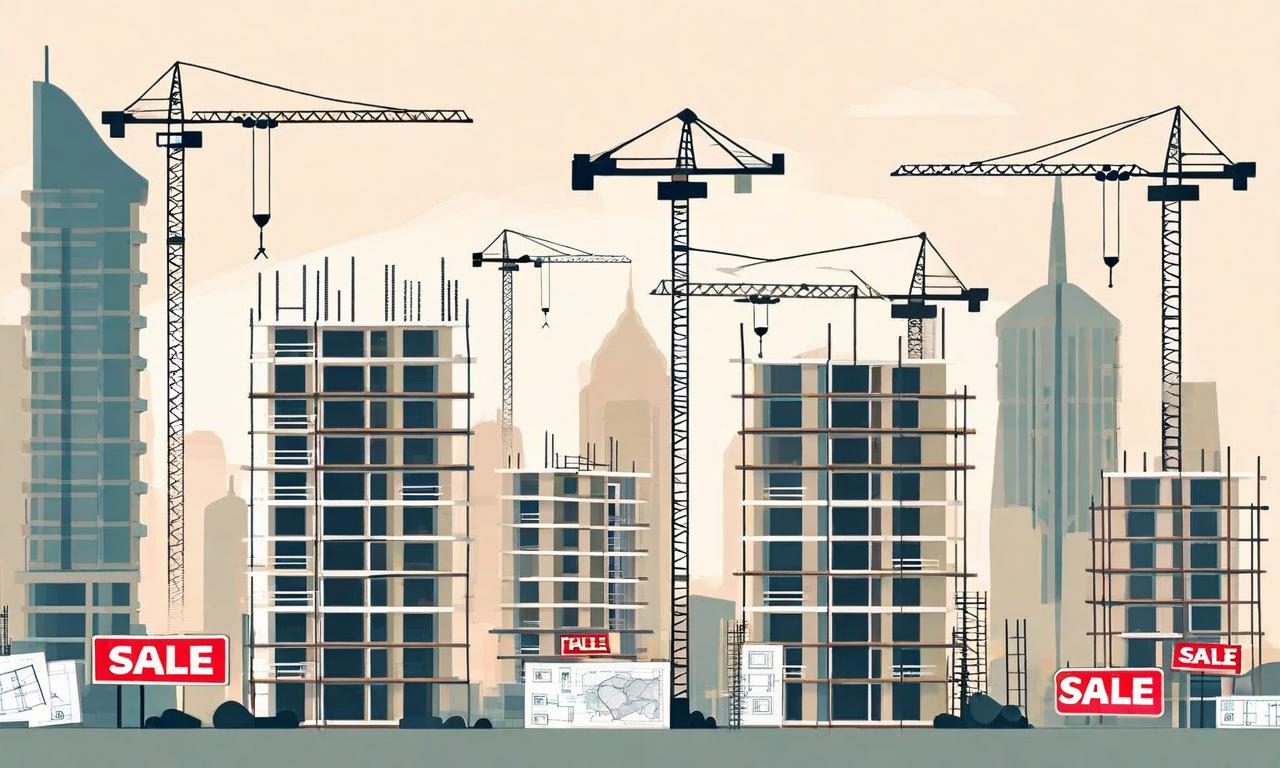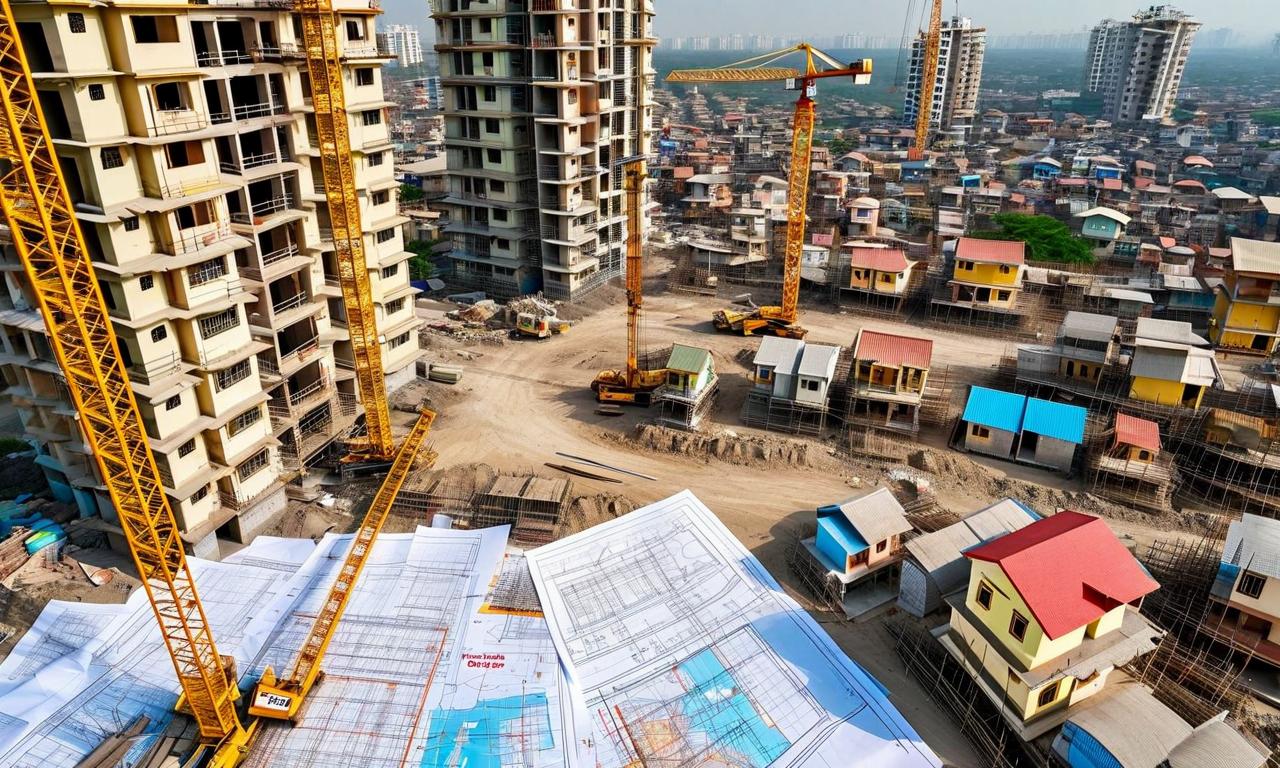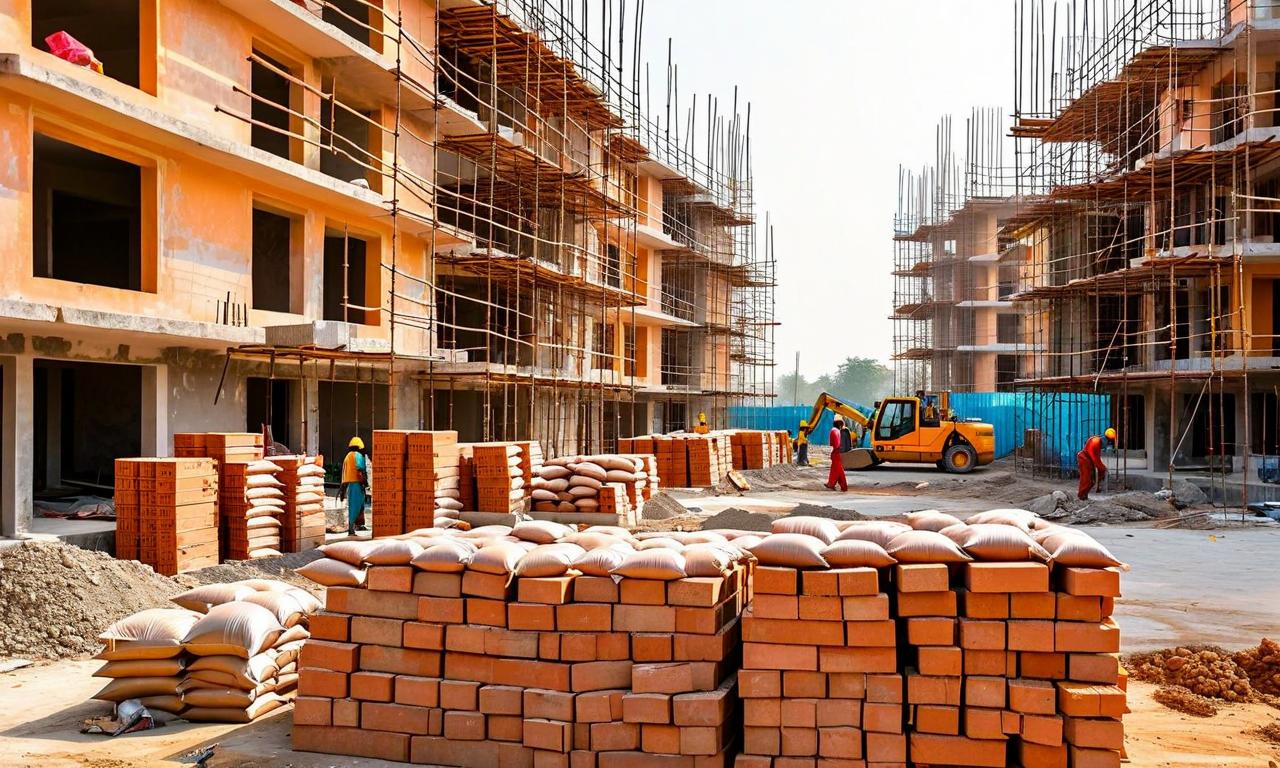Office Space Leasing Dips 6% in Q3 Across Major Indian Cities
Office space leasing in India's top eight cities decreased by 6% year-on-year in Q3 2023, totaling 17.8 million square feet. GCC leasing by foreign firms dropped 20% to 5.7 million sq ft. Despite this, January-September gross leasing grew 24% to 66.7 million sq ft, with Knight Frank projecting a record annual leasing of about 85 million sq ft. Cities showed varied performance: Bengaluru, Mumbai, and Delhi-NCR declined, while Kolkata, Hyderabad, and Chennai grew. Quarterly leasing in 2023 showed a declining trend from Q1 to Q3.

*this image is generated using AI for illustrative purposes only.
Office space leasing in India's top eight cities experienced a 6% year-on-year decline in the July-September quarter, according to a recent report by Knight Frank India. This shift in the commercial real estate market highlights changing dynamics in the sector, particularly impacting foreign firms and their Global Capability Centers (GCCs).
Key Findings
- Total office space leased: 17.8 million square feet
- Year-on-year decline: 6%
- GCC leasing by foreign firms: Dropped 20% to 5.7 million sq ft from 7.1 million sq ft
Despite the quarterly dip, the overall leasing activity for the first nine months of the year shows a positive trend:
- January-September gross leasing: 66.7 million sq ft
- Year-on-year growth: 24%
Knight Frank projects a record annual leasing of approximately 85 million sq ft for the full year, indicating long-term optimism in the market.
City-wise Performance
The report reveals significant variations across major cities:
| City | Q3 Leasing (million sq ft) | YoY Change |
|---|---|---|
| Bengaluru | 4.20 | -21% |
| Mumbai | 1.90 | -27% |
| Delhi-NCR | 2.70 | -15% |
| Kolkata | 0.50 | +190% |
| Hyderabad | 2.90 | +33% |
| Chennai | 2.80 | +9% |
While traditionally strong markets like Bengaluru, Mumbai, and Delhi-NCR faced declines, emerging markets such as Kolkata, Hyderabad, and Chennai showed remarkable growth.
Quarterly Trend
The consultant noted a declining trend across quarters in 2023:
| Quarter | Leasing (million sq ft) |
|---|---|
| Q1 (Jan-Mar) | 28.20 |
| Q2 (Apr-Jun) | 20.70 |
| Q3 (Jul-Sep) | 17.80 |
This sequential decline suggests a cooling in the office leasing market as the year progresses.
Market Implications
The mixed performance across cities reflects the evolving nature of India's commercial real estate sector. While established tech hubs face headwinds, emerging cities are gaining traction, possibly due to cost advantages and improving infrastructure.
The decline in GCC leasing by foreign firms could be attributed to global economic uncertainties and changing work models. However, the strong year-to-date performance and optimistic full-year forecast indicate underlying resilience in the Indian office market.
For investors and stakeholders in the real estate sector, these trends underscore the importance of diversification across cities and the need to monitor shifting corporate strategies in office space utilization.
As the market continues to evolve, factors such as the rise of remote work, the demand for flexible office spaces, and the growth of tier-2 cities could play crucial roles in shaping the future of office leasing in India.

















































